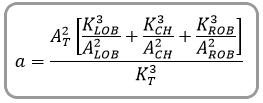Channel Studio performs one-dimensional water surface profiles for steady, gradually varied flow in open channels. It computes profiles for subcritical as well as supercritical flow regimes. The basic computational procedure is based on the solution of the one-dimensional energy equation. Energy losses are evaluated by:
- Friction using Manning’s equation
- Contraction/expansion coefficients multiplied by the change in velocity head
Note that Channel Studio computes using units and coefficients consistent with the Units Settings. In other words, when using metric units, the program does not convert variables to English prior to performing calculations and then reconvert back to Metric.
Water surface profiles are computed from one cross-section to the next, beginning at the most downstream section working upstream. It solves the Energy equation using an iterative procedure known as the Standard Step method. The Energy equation used is as follows:

Where:
Z1, Z2 = Channel invert elevations
Y1, Y2 = Depth of water at cross-section
V1, V2 = Average velocity at cross-section
a1, a2 = Velocity-weighting coefficients
he = Energy head loss
g = gravity 32.17 (9.81)

The energy head loss, he, between two cross sections is comprised of friction losses and contraction or expansion losses. The equation for the energy head loss is:

Where:
L = Discharge-weighted reach length
Sf = Friction slope between two sections
C = Expansion or contraction loss coefficient
The discharge-weighted reach length, L, is calculated as:

Where:
LLOB, LCH, LROB = Reach lengths for left overbank, main channel, and right overbank, respectively
QLOB, QCH, QROB = Flows for left overbank, main channel, and right overbank, respectively
The velocity-weighted coefficient, Alpha is computed as follows:

Where:
AT = Total flow area of cross section
KT = Total conveyance of cross section
ALOB, ACH , AROB = Flow areas of left overbank, main channel and right overbank, respectively
KLOB, KCH, KROB = Conveyances of left overbank, main channel and right overbank, respectively
Conveyance, K, is computed as:

Where:
Cm = Manning Coefficient = 1.486 (1.00)
n = Roughness coefficient
A = Cross-sectional area of flow
R = Hydraulic radius = Area/Wetted Perimeter
Horizontal Shear
Shear is computed at each cross-section (Except Section 1 or any sections just upstream of a bridge or culvert section). Shear is computed as:
Shear = uww * d * Sf(ave)
Where:
uww = unit weight of water = 62.4 (9810)
d = Depth of water in channel
Sf = Average friction slope between this section and the downstream section
Further Reading
See also, Water Surface Profiles for Open Channels for an in-depth discussion on how to calculate water surface profiles for an open channel.
